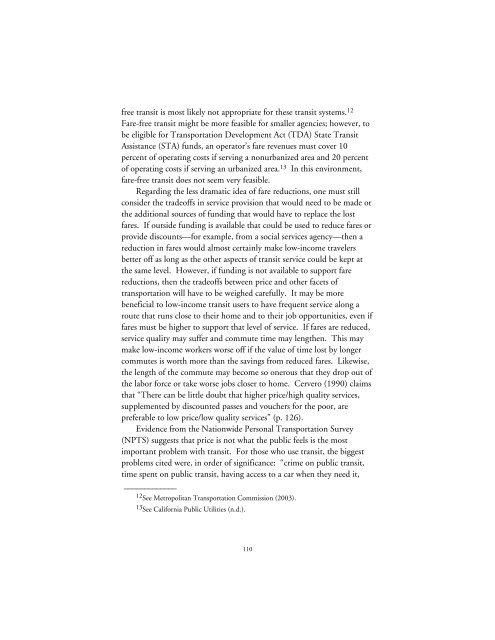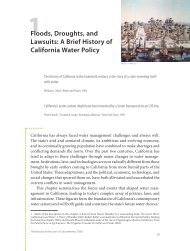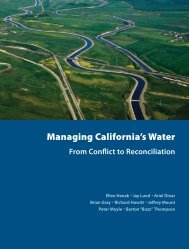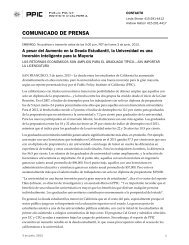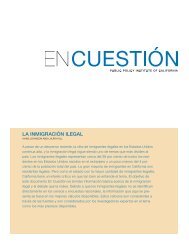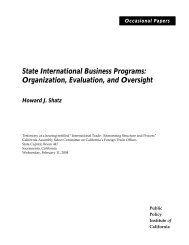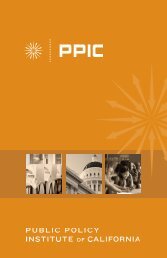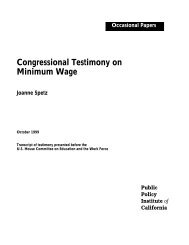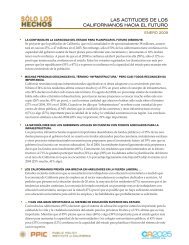Transportation Spending by Low-Income California Households ...
Transportation Spending by Low-Income California Households ...
Transportation Spending by Low-Income California Households ...
You also want an ePaper? Increase the reach of your titles
YUMPU automatically turns print PDFs into web optimized ePapers that Google loves.
free transit is most likely not appropriate for these transit systems. 12<br />
Fare-free transit might be more feasible for smaller agencies; however, to<br />
be eligible for <strong>Transportation</strong> Development Act (TDA) State Transit<br />
Assistance (STA) funds, an operator’s fare revenues must cover 10<br />
percent of operating costs if serving a nonurbanized area and 20 percent<br />
of operating costs if serving an urbanized area. 13 In this environment,<br />
fare-free transit does not seem very feasible.<br />
Regarding the less dramatic idea of fare reductions, one must still<br />
consider the tradeoffs in service provision that would need to be made or<br />
the additional sources of funding that would have to replace the lost<br />
fares. If outside funding is available that could be used to reduce fares or<br />
provide discounts—for example, from a social services agency—then a<br />
reduction in fares would almost certainly make low-income travelers<br />
better off as long as the other aspects of transit service could be kept at<br />
the same level. However, if funding is not available to support fare<br />
reductions, then the tradeoffs between price and other facets of<br />
transportation will have to be weighed carefully. It may be more<br />
beneficial to low-income transit users to have frequent service along a<br />
route that runs close to their home and to their job opportunities, even if<br />
fares must be higher to support that level of service. If fares are reduced,<br />
service quality may suffer and commute time may lengthen. This may<br />
make low-income workers worse off if the value of time lost <strong>by</strong> longer<br />
commutes is worth more than the savings from reduced fares. Likewise,<br />
the length of the commute may become so onerous that they drop out of<br />
the labor force or take worse jobs closer to home. Cervero (1990) claims<br />
that “There can be little doubt that higher price/high quality services,<br />
supplemented <strong>by</strong> discounted passes and vouchers for the poor, are<br />
preferable to low price/low quality services” (p. 126).<br />
Evidence from the Nationwide Personal <strong>Transportation</strong> Survey<br />
(NPTS) suggests that price is not what the public feels is the most<br />
important problem with transit. For those who use transit, the biggest<br />
problems cited were, in order of significance: “crime on public transit,<br />
time spent on public transit, having access to a car when they need it,<br />
_____________<br />
12 See Metropolitan <strong>Transportation</strong> Commission (2003).<br />
13 See <strong>California</strong> Public Utilities (n.d.).<br />
110


